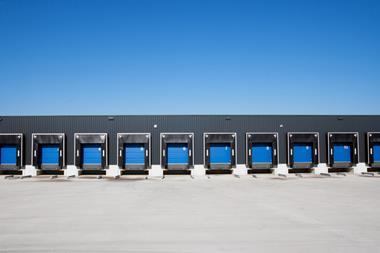Denmark’s largest commercial pensions company PFA has announced it is going back into the residential lettings sector, having sold its portfolio of this asset type back in 2006 at the top of the market.
It now plans to plough between DKK2bn (€270m) and DKK4bn into residential property over the next few years.
Michael Bruhn, director of PFA’s property division PFA Ejendomme, said: “As things stand right now, the stage is set for us to have residential property of about DKK2bn-4bn in our portfolio in the future.”
Back in 2006, PFA sold its residential portfolio – comprising 43 properties, including 2,202 rental apartments in Denmark’s largest cities – to a consortium including Danish real estate firm CenterPlan and Deutsche Bank’s RREEF.
Since selling the portfolio, PFA has only held a very few residential properties, Bruhn said.
“Now we have reached the point where we starting to find housing investment interesting again,” he said.
“The market is more mature, and there are some trends in the demand for housing that make it attractive to be a housing landlord again.”
The property division of the DKK552bn pensions provider has started the process of identifying projects and the type of residential property in which it will invest.
“The segment we are mainly looking at is modern family homes to suit, for example, a carpenter and an accounts assistant,” he said.
He said there was a lack of quality housing that Danes on ordinary incomes could afford to live in, adding that PFA hoped to meet this demand and also look at housing for young people and the elderly.
PFA plans to look particularly at urban areas where the population is growing, both in the Greater Copenhagen region and the provinces.
Bruhn said it was rental properties rather than owner-occupied housing that now interested PFA.
“We already have a large exposure to home ownership through our investment in Carlsberg City,” he said.
This time around, PFA will outsource the day-to-day management of its residential properties – a change from the last time it had such investments, when it did the administration in-house.
“We must stay focused and spend our energy on what we do best, and that is investment,” he said.
The new investment will be aimed at providing PFA with a stable income over time.
“We see housing as a kind of complement to parts of our bond investments at PFA,” said Bruhn.
He added that, because it was clear it would be difficult to get the same return on bonds as had been achieved in the past, it was necessary to look at alternatives.
“In this context, residential properties for rent can be an investment like a bond that provide a stable long-term return,” he said.
He said residential would also create more balance in the property portfolio.
“If we look at our Danish property investments, we have a very heavy overweight in office properties,” he said.
Although PFA has been very pleased with this sector bias, because it has generated a good return, residential property has a different risk profile from office, he said.









